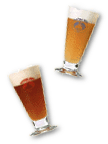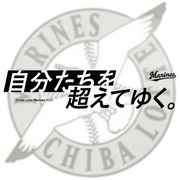Mention the term "jazz-rock" and listeners will likely think of such acts as Blood, Sweat & Tears, Chicago, or Weather Report; but in the early 1970's, a band called Chase was a rival to all of them, and bidded fair to take the country by storm; in fact, for a little while in 1971, they did precisely that with a chart-topping single, a Grammy nomination, and a high place in reader polls. Chase was formed by trumpet virtuoso Bill Chase in 1970, at a time when, thanks to outfits like Chicago and Blood, Sweat & Tears, the public was beginning an infatuation with jazz-rock fusion. Though its roots went back to 1968, Chase came along at just the right moment to ride that wave to major chart success in 1971, with the hit single "Get It On" and the accompanying self-titled debut album.
Bill Chase (born William Edward Chiaiese on October 24, 1934) hailed from Boston, Massachussets; the family (which changed its name to "Chase" while Bill Chiaiese was a boy) was musical on both sides, especially his mother's -- one great-uncle had even played trumpet with the New York Philharmonic and the Metropolitan Opera Orchestra. Bill Chase took up violin as a boy and later played percussion in the school band, but he found his real musical calling in 11th grade when, for the first time, he started playing the trumpet. He never looked back, and the only change in course on his way to a career was his shift from classical music to jazz, which took place around 1951, in the wake of his attending a Stan Kenton concert, where he first encountered the playing of Maynard Ferguson. Chase later attended the Berklee School of Music, where he studied both classical and jazz, and his teachers included John Coffey and Herb Pomeroy. In the course of a decade, from the mid-1950's through the mid-1960's, he went from playing in local Boston dance bands to playing with Woody Herman, Maynard Ferguson, and Woody Herman's Herd -- he was recording with Ferguson in the late 1950's, and became a featured soloist in Herman's band, and also a writer and arranger, and could be seen prominently in the Herd's appearances on television, as well as heard on their records. He later established himself in Las Vegas and was requested as a musician whenever he could appear on The Ed Sullivan Show or The Tonight Show. The seeds for his own band were planted in 1968, at just about the point where Chase found himself growing bored with the lot of a star soloist and began looking for a new vehicle through which to express himself and play his music. He began putting a group of his own together informally that year, and pulled together the beginnings of a core of a permanent band in 1969 -- this was the group that was eventually known as Chase, once it coalesced the following year. Bill Chase's original notion was that it would be an instrumental outfit, but he later added room for a singer and for vocals in their work, in order to extend their range and their audience appeal.
The group line-up that made it to their actual first record, in addition to Bill Chase, consisted of Jay Burrid on the drums, Phil Porter on keyboards, Dennis Johnson on bass and vocals, John Palmer on guitar, and Alan Ware, Jerry Van Blair, and Ted Piercefield on trumpet (the latter two also sang), with Terry Richards on lead vocals. Everyone of these musicians were superb, though it was the four trumpets that gave them the band its edge and its distinctive sound. The group was signed to Epic Records and were roaring up the charts in 1971 with "Get It On", an original that they'd been kicking around for months, in various line-ups (and initially without words), blasting it out over AM radio right to the Number One spot. The group's debut album marked their musical and commercial peak -- they were nominated for a Grammy Award that same year and Bill Chase placed in the number two spot (behind Frank Zappa) in a poll of the top pop musicians of the year, while Downbeat rated the Chase LP as the top pop album of 1971. Ironically, that first album sounded at times just a little bit like the original, late-1967-era, Al Kooper-led version of Blood, Sweat & Tears, a group whose inspiration had also come from Maynard Ferguson (in that case, Kooper's admiration for Ferguson's sound).
The band delivered even more in their live performances where, by most accounts, they seemed to put out 100% effort at every show. Indeed, they wrecked some of their potential as an opening act because their performances were so strong and overpowering that they embarrassed the headliners. Their reputation soon expanded beyond national boundaries as the band made tours of Europe, Africa, and Asia, and in 1972 they recorded a second album, entitled Ennea -- by the time it was cut, Burrid had been replaced by Gary Smith, and Terry Smith was out, replaced by G. G. Shinn who, in addition to singing, also played the trumpet. Unfortunately, this was also where Bill Chase, who'd written the material for the new album, lost the ear of the critics, who didn't like the second album nearly as much as they had the first. Other problems cropped up over the ensuing year, including more personnel changes, and Bill Chase driven into personal bankruptcy. He kept teaching and performing, but the band ceased to exist for several months.
In late 1972, Chase reformed the group with a new line-up, and during the following year he went through numerous personnel under the Chase name, trying to come up with a new band sound that work musically for him and that the public would accept. A third Chase album, Pure Music, was forthcoming in 1973 with a new line-up. The promise and excitement in the press for the 1971 album was dissipated now, and the new LP received a lukewarm reception, though the band was getting enough gigs to work steadily.
On August 9, 1974, the group was going by plane to Minnesota, for a performance at the Jackson County Fair, when they flew into bad weather -in the ensuing crash, Bill Chase, along with bandmembers Wally Yohn, John Emma, and Walter Clark, were killed with their two pilots. The tragedy generated shockwaves throughout the jazz community, although in the world of popular music, which was now becoming dominated by arena rock acts and beginning its embrace of disco, as well as encountering the noise of the punk rock sideshow, Chase was soon forgotten by listeners without long memories. A tribute album entitled Watch Closely Now, by surviving band alumni and longtime associates of Bill Chase, was recorded in 1977. In the late 1990's, all three Chase albums were reissued on CD on the Collectables label. ~ Bruce Eder,
Bill Chase (born William Edward Chiaiese on October 24, 1934) hailed from Boston, Massachussets; the family (which changed its name to "Chase" while Bill Chiaiese was a boy) was musical on both sides, especially his mother's -- one great-uncle had even played trumpet with the New York Philharmonic and the Metropolitan Opera Orchestra. Bill Chase took up violin as a boy and later played percussion in the school band, but he found his real musical calling in 11th grade when, for the first time, he started playing the trumpet. He never looked back, and the only change in course on his way to a career was his shift from classical music to jazz, which took place around 1951, in the wake of his attending a Stan Kenton concert, where he first encountered the playing of Maynard Ferguson. Chase later attended the Berklee School of Music, where he studied both classical and jazz, and his teachers included John Coffey and Herb Pomeroy. In the course of a decade, from the mid-1950's through the mid-1960's, he went from playing in local Boston dance bands to playing with Woody Herman, Maynard Ferguson, and Woody Herman's Herd -- he was recording with Ferguson in the late 1950's, and became a featured soloist in Herman's band, and also a writer and arranger, and could be seen prominently in the Herd's appearances on television, as well as heard on their records. He later established himself in Las Vegas and was requested as a musician whenever he could appear on The Ed Sullivan Show or The Tonight Show. The seeds for his own band were planted in 1968, at just about the point where Chase found himself growing bored with the lot of a star soloist and began looking for a new vehicle through which to express himself and play his music. He began putting a group of his own together informally that year, and pulled together the beginnings of a core of a permanent band in 1969 -- this was the group that was eventually known as Chase, once it coalesced the following year. Bill Chase's original notion was that it would be an instrumental outfit, but he later added room for a singer and for vocals in their work, in order to extend their range and their audience appeal.
The group line-up that made it to their actual first record, in addition to Bill Chase, consisted of Jay Burrid on the drums, Phil Porter on keyboards, Dennis Johnson on bass and vocals, John Palmer on guitar, and Alan Ware, Jerry Van Blair, and Ted Piercefield on trumpet (the latter two also sang), with Terry Richards on lead vocals. Everyone of these musicians were superb, though it was the four trumpets that gave them the band its edge and its distinctive sound. The group was signed to Epic Records and were roaring up the charts in 1971 with "Get It On", an original that they'd been kicking around for months, in various line-ups (and initially without words), blasting it out over AM radio right to the Number One spot. The group's debut album marked their musical and commercial peak -- they were nominated for a Grammy Award that same year and Bill Chase placed in the number two spot (behind Frank Zappa) in a poll of the top pop musicians of the year, while Downbeat rated the Chase LP as the top pop album of 1971. Ironically, that first album sounded at times just a little bit like the original, late-1967-era, Al Kooper-led version of Blood, Sweat & Tears, a group whose inspiration had also come from Maynard Ferguson (in that case, Kooper's admiration for Ferguson's sound).
The band delivered even more in their live performances where, by most accounts, they seemed to put out 100% effort at every show. Indeed, they wrecked some of their potential as an opening act because their performances were so strong and overpowering that they embarrassed the headliners. Their reputation soon expanded beyond national boundaries as the band made tours of Europe, Africa, and Asia, and in 1972 they recorded a second album, entitled Ennea -- by the time it was cut, Burrid had been replaced by Gary Smith, and Terry Smith was out, replaced by G. G. Shinn who, in addition to singing, also played the trumpet. Unfortunately, this was also where Bill Chase, who'd written the material for the new album, lost the ear of the critics, who didn't like the second album nearly as much as they had the first. Other problems cropped up over the ensuing year, including more personnel changes, and Bill Chase driven into personal bankruptcy. He kept teaching and performing, but the band ceased to exist for several months.
In late 1972, Chase reformed the group with a new line-up, and during the following year he went through numerous personnel under the Chase name, trying to come up with a new band sound that work musically for him and that the public would accept. A third Chase album, Pure Music, was forthcoming in 1973 with a new line-up. The promise and excitement in the press for the 1971 album was dissipated now, and the new LP received a lukewarm reception, though the band was getting enough gigs to work steadily.
On August 9, 1974, the group was going by plane to Minnesota, for a performance at the Jackson County Fair, when they flew into bad weather -in the ensuing crash, Bill Chase, along with bandmembers Wally Yohn, John Emma, and Walter Clark, were killed with their two pilots. The tragedy generated shockwaves throughout the jazz community, although in the world of popular music, which was now becoming dominated by arena rock acts and beginning its embrace of disco, as well as encountering the noise of the punk rock sideshow, Chase was soon forgotten by listeners without long memories. A tribute album entitled Watch Closely Now, by surviving band alumni and longtime associates of Bill Chase, was recorded in 1977. In the late 1990's, all three Chase albums were reissued on CD on the Collectables label. ~ Bruce Eder,
|
|
|
|
コメント(3)
Album: Chase
Artist: Chase
Released: 1971
1. Open up Wide
2. Livin' in Heat
3. Hello Groceries
4. Handbags and Gladrags
5. Get It On
6. Boys and Girls Together
7. Invitation to a River: Two Minds Meet/Stay/Paint It Sad/Reflec [Medley]
Chase's self-titled LP was as close to unabashed critical success as the group ever got, coming out just as Chicago and Blood, Sweat, & Tears were both at their respective peaks of popularity. There's not much here that sounds like either band -- Chase had a leaner, livelier sound, with an especially frantic rhythm section. The music is heavily white soul-influenced, dressed up in strong contrapuntal figures, soaring riffs, and riveting climaxes, which may come just a little too often given the relatively modest length of the album. The record is chock-full of enjoyable moments and one unabashed hit ("Get It On"), and loaded with virtuoso playing. Lead singer Terry Richards and backing vocalists Ted Piercefield and Jerry Van Blair (who also play trumpets) are strong but not overbearing singers, and a good balance is struck between the vocalists and the band, which was a problem that Blood, Sweat, & Tears never did solve -- the result is a record that's sort of a rock-influenced descendant of Stan Kenton's more experimental work of the late '40s and early '50s, which slotted in well with the progressive side of jazz-rock in 1971. "Invitation to a River," at 14 minutes and divided into five parts, may seem like the height of pretentiousness, but in 1971 audiences devoured it, and the playing, including what sound like 16th notes on the trumpets, is something to marvel at in a popular context. The CD reissue even reprints Nat Hentoff's original liner notes. ~ Bruce Eder
Artist: Chase
Released: 1971
1. Open up Wide
2. Livin' in Heat
3. Hello Groceries
4. Handbags and Gladrags
5. Get It On
6. Boys and Girls Together
7. Invitation to a River: Two Minds Meet/Stay/Paint It Sad/Reflec [Medley]
Chase's self-titled LP was as close to unabashed critical success as the group ever got, coming out just as Chicago and Blood, Sweat, & Tears were both at their respective peaks of popularity. There's not much here that sounds like either band -- Chase had a leaner, livelier sound, with an especially frantic rhythm section. The music is heavily white soul-influenced, dressed up in strong contrapuntal figures, soaring riffs, and riveting climaxes, which may come just a little too often given the relatively modest length of the album. The record is chock-full of enjoyable moments and one unabashed hit ("Get It On"), and loaded with virtuoso playing. Lead singer Terry Richards and backing vocalists Ted Piercefield and Jerry Van Blair (who also play trumpets) are strong but not overbearing singers, and a good balance is struck between the vocalists and the band, which was a problem that Blood, Sweat, & Tears never did solve -- the result is a record that's sort of a rock-influenced descendant of Stan Kenton's more experimental work of the late '40s and early '50s, which slotted in well with the progressive side of jazz-rock in 1971. "Invitation to a River," at 14 minutes and divided into five parts, may seem like the height of pretentiousness, but in 1971 audiences devoured it, and the playing, including what sound like 16th notes on the trumpets, is something to marvel at in a popular context. The CD reissue even reprints Nat Hentoff's original liner notes. ~ Bruce Eder
Album: Pure Music
Artist: Chase
Released: 1974
1. Weird Song No. 1
2. Run Back to Mama
3. Twinkles
4. Bochawa
5. Love Is on the Way
6. Close up Tight
It would have been interesting to see where Chase would have gone had it not been for the plane crash that killed the leader and half the band, because Pure Music represented a dramatic change in direction for the band. Where the group's first two albums were standard if scintillating jazz-rock not all that different from Blood, Sweat & Tears or Chicago, Pure Music pointed the way to fusion, with its angular guitar, keyboard pyrotechnics and reliance on instrumental jams rather than vocal-oriented songs. The two vocal selections are adequate, but it's the searing sound of the three uptempo selections that tell the tale of Pure Music. From the opening of "Weird Song No. 1," tit's obvious that this brand-new band, with the leader the only holdover from Chase and Ennea, was ready to fly in new directions. The interplay between Chase on electric trumpet and Yohn on synthesizer was echoed throughout the disc, and the trumpet section sound was bright, clear, and incredibly tight. On "Bochawa," the leader and Jay Sollenberger try to outmatch and outwit one another, and on the concluding "Close Up Tight," Chase and Yohn again go for the jugular. "Twinkles" is a chance for the listener to breathe, but for the rest of it the band is breathing fire. Heady stuff made all the more engaging as there was sadly to be no follow-up. ~ Ross Boissoneau,
Artist: Chase
Released: 1974
1. Weird Song No. 1
2. Run Back to Mama
3. Twinkles
4. Bochawa
5. Love Is on the Way
6. Close up Tight
It would have been interesting to see where Chase would have gone had it not been for the plane crash that killed the leader and half the band, because Pure Music represented a dramatic change in direction for the band. Where the group's first two albums were standard if scintillating jazz-rock not all that different from Blood, Sweat & Tears or Chicago, Pure Music pointed the way to fusion, with its angular guitar, keyboard pyrotechnics and reliance on instrumental jams rather than vocal-oriented songs. The two vocal selections are adequate, but it's the searing sound of the three uptempo selections that tell the tale of Pure Music. From the opening of "Weird Song No. 1," tit's obvious that this brand-new band, with the leader the only holdover from Chase and Ennea, was ready to fly in new directions. The interplay between Chase on electric trumpet and Yohn on synthesizer was echoed throughout the disc, and the trumpet section sound was bright, clear, and incredibly tight. On "Bochawa," the leader and Jay Sollenberger try to outmatch and outwit one another, and on the concluding "Close Up Tight," Chase and Yohn again go for the jugular. "Twinkles" is a chance for the listener to breathe, but for the rest of it the band is breathing fire. Heady stuff made all the more engaging as there was sadly to be no follow-up. ~ Ross Boissoneau,
- mixiユーザー
- ログインしてコメントしよう!
|
|
|
|
ばななのむれ吉ロック喫茶 更新情報
ばななのむれ吉ロック喫茶のメンバーはこんなコミュニティにも参加しています
人気コミュニティランキング
- 1位
- お洒落な女の子が好き
- 90011人
- 2位
- 酒好き
- 170663人
- 3位
- 千葉 ロッテマリーンズ
- 37151人
























